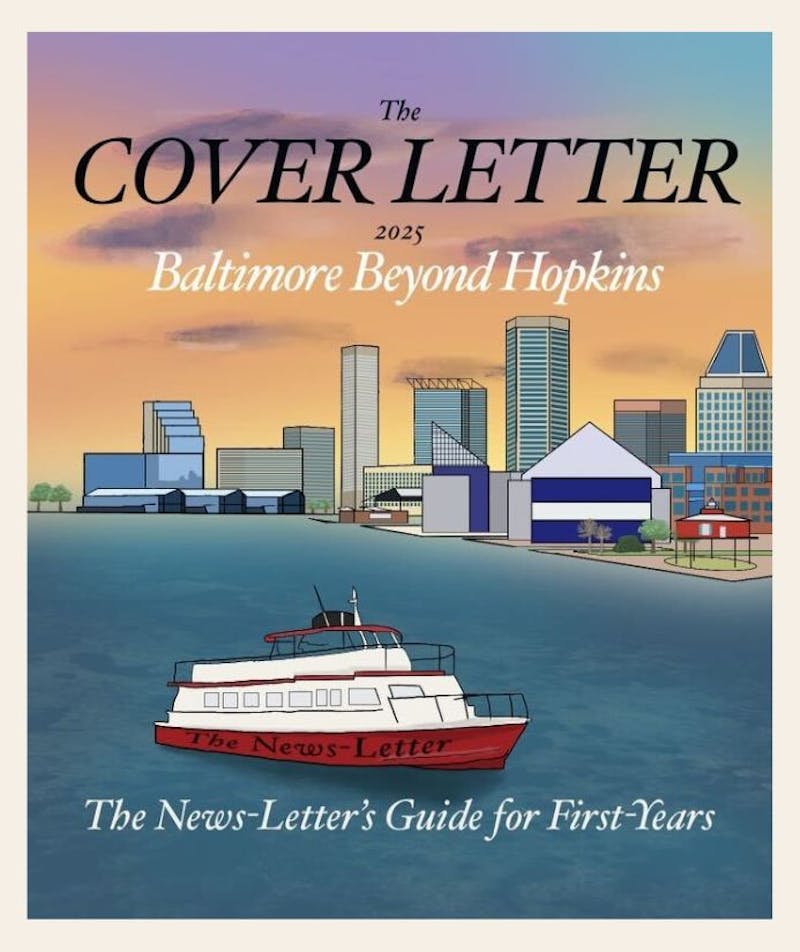Cartoonist and satirist Bill Griffith gave a lecture, "Up from the Underground with Zippy: 38 Years and Still Climbing," regarding the development of his successful comic strip, Zippy the Pinhead, last Thursday in the Mattin Center to a crowd of avid fans.
Zippy the Pinhead is a nationally syndicated comic strip which runs in publications such as the Baltimore Sun and the Washington Post. It is best known for its quirky sense of humor, poetic pacing and its eccentric approach to deconstructing American icons and staples of consumerism.
His presentation was the sixth in a series of annual artist talks that have taken place in the Mattin Center, courtesy of the Homewood Arts Workshops and Homewood Arts Programs. Previous lecturers have included other cartoonists such as Phoebe Gloeckner.
Griffith greeted the audience sounding a little shy, but soon found his groove once he launched into his presentation. The crowd, which consisted for the most part of fans old enough to have been with Zippy since inception, was quick to accommodate Griffith with eager ears.
Zippy the Pinhead has led an interesting life, garnering attention from all over the globe. Those who, as Griffith phrased, "don't get it" have often criticized the strip as being indecipherable and not reader-friendly. Actor Robin Williams once remarked, "Zippy is like a word processor with dyslexia." Despite any supposed drawbacks to the strip, through the calm, collected voice of Griffith, the simple brilliance of America's most notorious comic pinhead shone forth.
Zippy the Pinhead collects together a variety of influences, creating a smorgasbord of American low-brow culture as art. The strip revolves around the title character, who spouts semi-nonsensical observations with his bizarre cast of friends and collaborators. Among these are Griffy, the cartoon version of creator Griffith, Claude Funston, the tortured embodiment of the loyal American citizen, Zerbina, Zippy's off-again, on-again wife, Mr. Toad, an aggressive manipulator, Shelf Life, Griffith's fast-talking scam artist, and more.
Griffith admitted that as far as the characters' personalities are concerned, they're all bits and pieces of him to a certain extent. Zippy was primarily inspired by Schlitzie, a real-life "pinhead" featured in the 1932 cult classic Freaks. Griffith was working on a comic about two lovers who were complete opposites, and it was then that he developed the idea for a pinhead protagonist.
Griffith has always been interested in the low-brow phenomenons of American culture. He cited how one of his favorite artists, Reginald Marsh, also found a morbid fascination with spectacles such as carnivals, subways and desolate urban streets. Zippy's status as a pinhead is just one of the many ways in which Griffith has made a nod to his treasured calamities these past 38 years.
One of the highlights of Zippy the Pinhead has always been the random assortment of consumer icons and local oddities. Griffith presented several strips which guest-starred various Baltimore gems, such as the Man/Woman statue in front of Penn Station, Mr. Boh of Natty Boh fame and the Hollywood Diner. Griffith likes to put Zippy and his comrades in a lot of real life places, and he discussed how it has helped him establish and connect to a grand network of fans. Most of the time, Griffith uses locations based off of photos sent to him by readers, and acknowledges the contributors in his strip.
In the past Zippy the Pinhead has received some negative attention for its usage of these characters, most notably Hello Kitty and, recently, Bob's Big Boy. Griffith read to the crowd the cease-and-desist letter sent to him by the owners of Bob's Big Boy. The company is, oddly enough, not charging him with using the character in his strip, but claiming that he owns a diner that has a statue of the Big Boy in it, and is requesting that he remove the Big Boy statue from his diner. Griffith does not own a diner, nor does he own a Big Boy statue.
Griffith regaled the crowd with a variety of other tidbits concerning the strip. For example, Zippy runs every four years as a presidential candidate. In 1980 Zippy actually received around 10,000 write-in votes in the state of California. Just another bizarre snippet in the career of Zippy, appropriately so for the strip which was almost promoted by King Syndications as "the weirdest strip in America."


